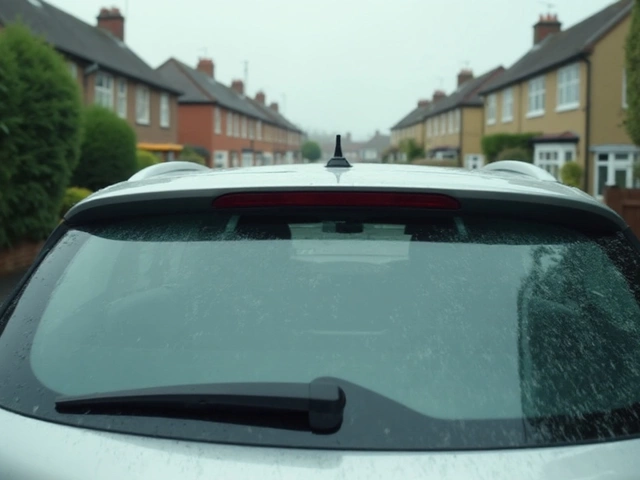Testing Your Car Fuel System: Quick DIY Guide
Not sure why your engine is coughing or why the acceleration feels lazy? Most of those symptoms point straight to the fuel system. Before you call a garage, grab a few tools and run through these simple checks. You’ll save time, money, and get a better idea of what’s really wrong.
Spot the Warning Signs First
Things like hard starts, occasional stalling, a loss of power under load, or a sudden drop in fuel economy are classic red flags. If you’ve noticed a strong smell of gasoline or the check‑engine light is flashing, the fuel delivery side is probably at fault. Write down when the problem shows up – cold mornings, after a long drive, or only when you’re climbing hills – that info will help pinpoint the culprit.
Basic Tools You’ll Need
All you really need is a basic set of hand tools, a fuel pressure gauge (you can rent one from a local auto parts store), and a multimeter. A safety‑approved container for catching fuel, some rags, and a pair of goggles are a good idea, too. If you’re comfortable, a small screwdriver set will let you remove the fuel pump relay for a quick test.
Now, let’s walk through the most common fuel system checks.
1. Test Fuel Pump Performance
Start with the fuel pump because a weak pump is the most common issue. Locate the fuel rail’s test port – it’s usually a small Schrader valve on the rail. Connect your fuel pressure gauge, turn the ignition on (don’t start the engine), and watch the pressure rise.
For most gasoline engines, you should see around 30‑45 psi at idle and up to 55‑65 psi when you press the accelerator. If the gauge reads low or never reaches the target, the pump is likely failing or the filter is clogged.
While you have the pressure gauge attached, crank the engine for a few seconds. The pressure should stay steady; a rapid drop means the pump can’t maintain flow.
2. Inspect the Fuel Filter
A dirty filter restricts flow and can mimic a weak pump. Most cars have a replace‑able filter in the fuel line under the car or in the engine bay. Check your owner’s manual for location.
If the filter is black, gritty, or looks swollen, replace it. It’s a cheap fix that can restore proper pressure instantly.
3. Check Fuel Injectors
Injectors can get clogged or leak. A quick way to spot a problem is the “click test.” Turn the key to the on position and listen near each injector with a screwdriver tip or a stethoscope. Each should make a rapid, consistent clicking sound as it opens and closes.
If an injector is silent or sounds irregular, it may be stuck closed or leaking. You can also perform a resistance check with a multimeter. Compare the reading to the specs in your service manual – a big deviation indicates a bad injector.
4. Look at the Fuel Pressure Regulator
Some cars have an external regulator that can fail and cause high or low pressure. Look for a small canister on the fuel rail with a vacuum hose attached. If you see fuel leaking from the regulator or the vacuum hose is cracked, replace the part.
5. When to Call in the Pros
If all your pressure readings are within spec, the filter is clean, and the injectors click normally, the issue may lie deeper – like a clogged intake, a faulty sensor, or engine mechanical problems. At that point, a professional scan tool can read live data and pinpoint the fault.
Also, if you ever smell raw gasoline while the engine is running, stop immediately. That could mean a leak in the fuel line, which is a fire hazard.
Wrap‑Up: Keep Your Fuel System Healthy
Regularly replace the fuel filter (usually every 30‑40k miles) and keep an eye on pressure readings if you notice performance drop. A quick pressure test once a year can catch a weakening pump before it leaves you stranded.
Testing the fuel system isn’t rocket science – just a few minutes, a couple of tools, and a bit of patience. Follow these steps, you’ll know exactly what’s going on, and you’ll either fix it yourself or have a clear story to share with your mechanic. Safe driving!
 28 July 2025
28 July 2025
How to Test a Bad Fuel Pump: Signs, DIY Diagnostics, and Fixes
Learn how to test for a bad fuel pump with practical steps, key symptoms, and helpful tricks to save you time and money at home.
Latest Posts
-

What Are the Symptoms of Bad Spark Plugs? Signs Your Engine Needs New Spark Plugs
-

How Do I Know What Size Exhaust I Need? Straightforward Guide for Perfect Fit
-

Is It Legal to Remove Your Rear Windscreen Wiper in the UK?
-

What Does a Complete Clutch Kit Include? Discover the Essentials
-

How to Check Your Fuel Pump

0